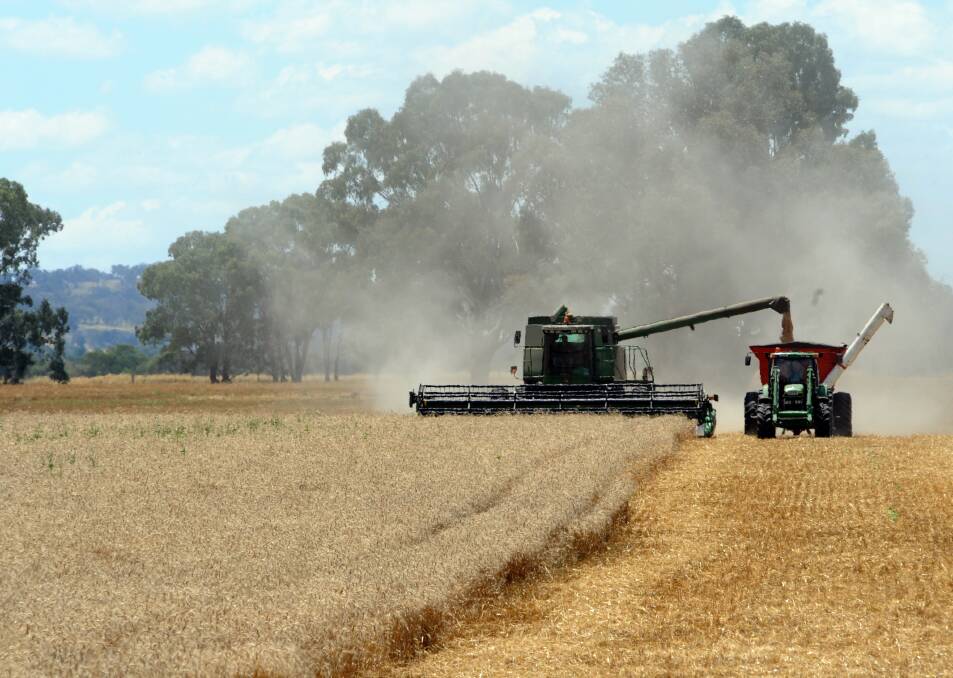
Record West Australian and South Australian winter crops are making up for excessive rain and serious flood damage in the east, pushing the gross value of the nation's farm production to a near-record $85 billion this financial year.
Subscribe now for unlimited access to all our agricultural news
across the nation
or signup to continue reading
The winter crop is likely to be the second largest ever, at more than 62 million tonnes.
Agricultural exports will break records, too, probably exceeding $72b, according to the national commodity forecaster, Australian Bureau of Agricultural and Resource Economics and Sciences.
While saturated conditions and weather delays are estimated to have caused abandonment of a significant 16 per cent of NSW's planted area, seven per cent of Victoria's winter crop and 5pc of Queensland production, ABARES has tipped new records further west.
"Crops in WA and SA benefitted the most from spring conditions," said executive director, Dr Jared Greenville.
"Total production in Queensland is also forecast to reach its second highest record, despite parts of the Darling Downs missing out on plantings after being impacted by the floods."
RELATED READING
In NSW about 2m tonnes has now been wiped off the initial forecasts for the NSW crop, which is now more likely to total about 13.2m tonnes, or about 30pc below last year's near-record yield.
Dr Greenville said although flooding had been devastating for some, Australian agriculture was still on track for an outstanding 12 months as the sector set new winter yield and commodity export benchmarks.
Gross value of agricultural production was forecast to be just shy of the record set the previous year.
Livestock production was expected to hold steady, contributing $34b to the national tally.
"Another bumper year combined with high commodity prices means Australia's agricultural exports are forecast to break $72b in 2022-23," Dr Greenville said.
Export values have exceeded $5b every month in the past year, despite port congestion and global shipping disruption.
ABARES noted prior to November 2021 that value ceiling had only been breached once before, in December 2016.
Good and bad
Wheat exports alone were worth $1b each month this year.
Some states, and parts of others, were experiencing their best winter crops on record and results elsewhere were a mix of good and bad.
Victoria had a record amount of crop planted this year, with high yields in the Mallee and the Wimmera offsetting crop losses in central and northern border regions.
However, the full picture of damage to crops from extensive waterlogging remained unknown.
"Considerable uncertainty remains over winter crop harvest progress and grain quality in NSW and Victoria given ongoing high rainfall, which could lead to downgrades in production value," Dr Greenville said.
"The current conditions are a reminder of the volatility of Australia's climate.
"While it's impressive how resilient the agriculture sector has been, it shows how events like floods and droughts can impact regions and Australian farmers."
El Nino on radar
ABARES noted the wetter La Nina weather pattern trend of the past two years was likely to continue bringing above average rainfall to eastern and northern Australia over summer.
However, some computer models suggested much drier El Nino conditions could return, bringing an abrupt shift to the global climatic outlook next year.
For the first time in about three years, the US climate Prediction Centre and Columbia University's International Research Institute for Climate and Society had tipped an El Nino outlook as most likely in the Pacific Ocean.
In the meantime, the chances of rainfall exceeding the summer median were being tipped by the Bureau of Meteorology as greater than 65pc in most of eastern Australia and greater than 75pc in eastern Queensland and NSW and North Queensland.
Start the day with all the big news in agriculture! Sign up below to receive our daily Farmonline newsletter.


